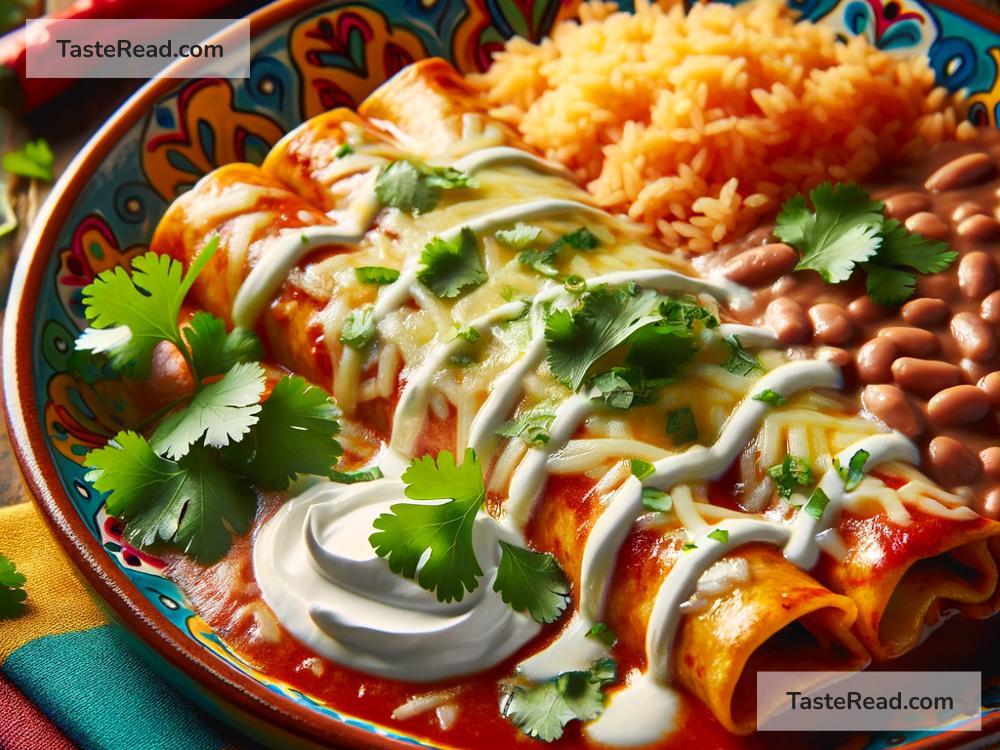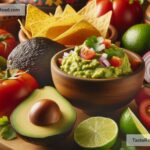The Story of the Mexican Enchilada
Few dishes represent Mexican food quite like the enchilada. This simple yet flavorful dish is loved worldwide, but behind every bite is a story full of history and tradition. The enchilada is more than just a tasty meal; it is a symbol of Mexico’s rich cultural heritage, blending ancient traditions with modern flavors. Let’s dive into the story of the Mexican enchilada and explore how this iconic dish came to be.
What Is an Enchilada?
An enchilada is a soft tortilla, usually made from corn, that is rolled around a filling and covered with a rich sauce before being baked or served hot. Fillings can range from meats like chicken, beef, or pork, to beans, cheese, vegetables, and even seafood. The sauce, which is often made from chili peppers, tomatoes, and spices, is what gives the enchilada its signature flavor.
Although recipes vary depending on the region or personal preference, the enchilada always maintains its essence: a marriage of Mexican staple ingredients, like tortillas, chili peppers, and fresh vegetables. This dish is not just food; it’s a celebration of Mexican culinary art.
How the Enchilada Began
To understand the enchilada, we have to step back thousands of years into Mexico’s ancient history. Before the arrival of Europeans, the indigenous peoples of Mexico, such as the Aztecs and Maya, had already perfected the art of cooking with corn. Corn was (and still is) one of Mexico’s most important crops, serving as the base for tortillas. These early tortillas were often used as a wrap for different fillings, a practice that became the foundation for the enchilada.
In fact, the word “enchilada” comes from the Spanish verb enchilar, meaning “to season with chili.” This refers to the act of coating or dipping the tortilla in chili sauce, a tradition rooted in pre-Hispanic cooking methods. The indigenous people were already using chili peppers to create spicy, flavorful sauces long before Spanish colonists arrived.
When the Spaniards came to Mexico in the 1500s, they brought new ingredients like cheese, beef, pork, and chicken. They also influenced cooking techniques—like baking. Over time, the indigenous food traditions merged with Spanish ideas, giving rise to the enchiladas we know today.
Enchiladas Through the Ages
By the 19th century, enchiladas were well-known across Mexico. They appeared in cookbooks, and people began experimenting with variations. In some regions, enchiladas were fried before being covered in sauce; in others, they were stacked like pancakes instead of rolled. Depending on the local culture and available ingredients, the filling, sauce, and toppings varied widely.
One famous variation is the enchiladas verdes (green enchiladas), which are made with a tangy sauce of tomatillos and green chili peppers. Another is enchiladas rojas (red enchiladas), made with a rich, smoky sauce of dried red chilies and tomatoes. Some regions prefer sweet enchiladas, filled with fruits like plantains, or enchiladas stuffed with exotic ingredients, like fresh seafood.
Enchiladas also carry cultural significance in celebrations. In many Mexican families, making enchiladas is an activity that brings everyone together. The process—cooking the sauce, preparing the tortillas, and rolling them with care—is a shared experience passed down through generations.
Crossing Borders
As Mexican food became popular internationally, enchiladas traveled far beyond their homeland. When Mexican immigrants brought their cuisine to the United States, dishes like tacos, burritos, and enchiladas quickly became favorites.
Tex-Mex cooking—an American spin on Mexican dishes—introduced enchiladas with new twists, like using flour tortillas instead of corn and adding ingredients like sour cream, cheddar cheese, and canned sauces. While Tex-Mex enchiladas differ from traditional Mexican recipes, they have helped spread the joy of this classic dish to millions of people around the world.
Today, enchiladas are featured on menus in restaurants everywhere, from small Mexican eateries to large international chains. However, the original Mexican methods still shine through in authentic recipes that honor the dish’s roots.
A Dish That Brings People Together
What makes enchiladas so special is their versatility and deep connection to Mexican culture. Whether eaten at home, at a street food stall, or in a fancy restaurant, enchiladas remind us of the beauty of simple, flavorful food.
For many Mexicans, enchiladas represent comfort and tradition. They’re also incredibly adaptable—no matter where you’re from, you can customize them to suit your tastes. While the fillings and sauces may vary, the shared enjoyment of enchiladas brings people together around the table.
If you’ve never made enchiladas at home, it’s easier than you might think! Start with corn tortillas, a filling of your choice, and a homemade sauce. Bake them in the oven until bubbling, and top them with fresh ingredients like cheese, cilantro, or avocado. And the best part? Sharing them with family and friends.
Conclusion
The story of the Mexican enchilada is one of history, tradition, and global appreciation. From its ancient origins in the Aztec and Maya kitchens to its rise as an international favorite, the enchilada is a dish that tells Mexico’s story with every bite.
So next time you enjoy an enchilada, remember the centuries of culture and creativity that went into this delicious dish. Whether you’re in Mexico or halfway across the world, enchiladas have a way of making you feel connected to the heart of Mexican cuisine.


